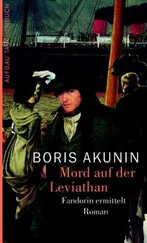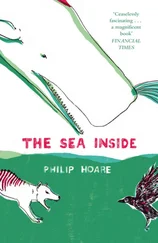1 ...7 8 9 11 12 13 ...20 These scenes, part nightmare and part romance, are some of the most memorable in Victorian literature, so vividly written one might almost believe the author had experienced them himself. But when he arrived at the wintry port in the Christmas of 1840, Melville stayed on the opposite side of the river, at Fairhaven. He was accompanied by Gansevoort, who bought his younger brother the items he needed: an oilskin suit, a red flannel shirt, duck trousers; a straw tick, pillow and blankets; a sheath knife and fork, a tin spoon and plate; a sewing kit, soap, razor, dirty bag; and a sea chest in which to store them.
30 December 1840
LIST OF PERSONS
COMPRISING THE CREW OF THE SHIP ACUSHNET OF FAIRHAVEN
Whereof the Master, Valentine Pease, bound for Pacific Ocean
| NAMES |
PLACES OF BIRTH |
PLACES OF RESIDENCE |
OF WHAT COUNTRY CITIZENS OR SUBJECTS |
| Herman Melville |
Fairhaven |
New York |
US |
DESCRIPTION OF THEIR PERSONS
| AGE |
HEIGHT FEET INCHES |
COMPLEXION |
HAIR |
| 21 |
5 9 ½ |
Dark |
Brown |
Of the twenty-six men about to sail on the Acushnet , all had a share or lay in her future–fractions as eloquent as any amount of gold braid. Captain Pease, master and part owner, claimed 1/12 of all profits; the first officer, Frederic Raymond of Nantucket, 1/25. As a foremost hand, Melville’s lay was 1/75; while lowly Carlos Green of New York–a true greenhand–could expect just 1/190. For some, even that was welcome, not least William Maiden, the cook, and deckhands Thomas Johnson and Enoch Read, whose complexions were recorded as black or mulatto. They had ever laboured under a master; now they had signed away their lives to the whale.
The Acushnet was fresh off the production line; at the peak of the whaling boom, new whale-ships were said to be built by the mile, ‘chopped off the line, like sausages’. Others were converted liners or packets. ‘Thus the ship that once carried over gay parties of ladies and gentlemen, as tourists, to Liverpool or London, now carries a crew of harpooneers round Cape Horn into the Pacific’. Quarterdecks where the gentry once took the sea air now reeked of whale oil. ‘Plump of hull and long of spar’, the Acushnet was 104 feet long, 27 feet wide and 13 feet deep. Named after the river on which she was launched, she towered over the wharf at Fairhaven, her web of rigging and tall masts statements of industry and fortitude. Unlike her alter ego, she lacked bulwarks studded with whale teeth or a tiller fashioned from a whale’s jaw, embellishments that gave Ahab’s Pequod the air of a ‘cannibal of a craft, tricking herself forth in the chased bones of her enemies’. The Acushnet had her own disguise: false gunports painted on her side to ward off attacks from pirates or savages.
She was owned by a syndicate of eighteen men, among them the agent, Melvin O. Bradford and his brother, Marlboro Bradford, both Quakers. Their captain, Valentine Pease Junior, was forty-three years old, a tall, stern, bewhiskered and sometimes profane man, not overwhelmingly blessed with luck. On his first command, the Houqua , his first mate, Edward C. Starbuck, had been discharged in Tahiti ‘under conditions curious and not fully explained’. Seven men drowned, two others died when their boat was stove in by a whale, and eleven crew deserted, leaving only three original members to return and claim their lays.
This was not an unusual story. Of her original crew of twenty-six, only eleven would return on the Acushnet . The rest deserted or were discharged, discouraged by long and inhospitable voyages and strictures enforced by omnipotent captains. Contracts stated that men were not to leave the ship until her hold was full of oil, and that they must adhere ‘to the good order, effectual government, health and moral habits’ expected of them. ‘Criminal intercourse’ with women would be punished by the forfeit of five days’ pay; ‘intemperance and licentiousness’ earned similar penalties, if not the lash. To add insult to injury, wear and tear meant that they had to buy new clothes from overpriced onboard supplies. When the debt was deducted from their share of the ship’s profits, they were often left with nothing, or even found themselves owing money for their trouble. Given such conditions, it was hardly surprising that men jumped ship. In fact, two of the Acushnet’s crew had deserted even before she sailed. They had not signed up to be slaves, after all.
There are some things a place will not tell you, as if it conspires with its past. To look at it now, you would not guess that New Bedford was once the richest city in America. This now incongruous town–at least, to anyone who has not been there–was the capital of a new economy, one that reached out across the world; the bustling industrial centre of a republic founded on the backs of whales.
New Bedford’s roots lay in its sheltered harbour and good connections with the rest of New England, but, above all, strong ties with the Quakers of Nantucket–who had perfected the art of whaling in the early eighteenth century–contributed to the port’s unprecedented success. One of those Quakers, Joseph Rotch, developed New Bedford in the years following the Revolution. By the 1840s, when Melville arrived, the port had grown rich–more so since it was linked by a bridge with Fairhaven, its twin on the other side of the river.
Route 6, the highway once known as the King’s road and which runs all the way to the tip of Cape Cod, still crosses the Acushnet by a nineteenth-century turntable bridge, a Meccano construction that pivots to permit more important traffic to pass. Here vessels still have precedence over cars. This is a working port. It smells of diesel and fish, and there are ships at the end of its streets. It is also a designated national park, not of rolling hills or woods, but of thirteen city blocks, all devoted to a memory.
NEW BEDFORD–THE WHALING CITY
Set next to the modern freeway, on a huge, block-like plant for refrigerating fish, is a giant mural of air-brushed whales swimming serenely in a turquoise-blue sea. The whale is imprinted on New Bedford: even the licence plates of the cars that drive through it are embossed with the sperm whale, the state animal of Massachusetts.
In front of the Free Public Library is an outsize statue on a granite block. It resembles a war memorial, but it was set in place in 1913, and carved with a succinct epithet–
A DEAD WHALE OR A STOVE BOAT.
–a simple enough equation. Despite his square jaw and Aryan looks, there is something tribal about the idealized, muscular whaler balanced on a disconnected prow; he might almost be a Plains Indian. His spear is aimed at one inexorable point: we are the whale; this was the first human it saw, and the last.
Modern New Bedford lives on in the shadow of such monuments. Brooks Pharmacy sells garish postcards of the Whaling City. Visitors can ‘Catch the Whale’, a downtown shuttle bus, or buy T-shirts from the Black Whale shop. Around the corner, the dark interior of Carter’s menswear store, est.1947, is piled high with workwear and fishermen’s caps for modern Ishmaels. The young assistants nod to their few customers on a Saturday morning, preferring to get on with talking about their Friday nights. Tomorrow, the church steeple over the way will summon sailors to the Lord, along with the sleepy guests from the Spouter Inn.
In this same New Bedford there stands a Whaleman’s Chapel, and few are the moody fishermen, shortly bound for the Indian Ocean or Pacific, who fail to make a Sunday visit to the spot. I am sure that I did not.
Читать дальше












